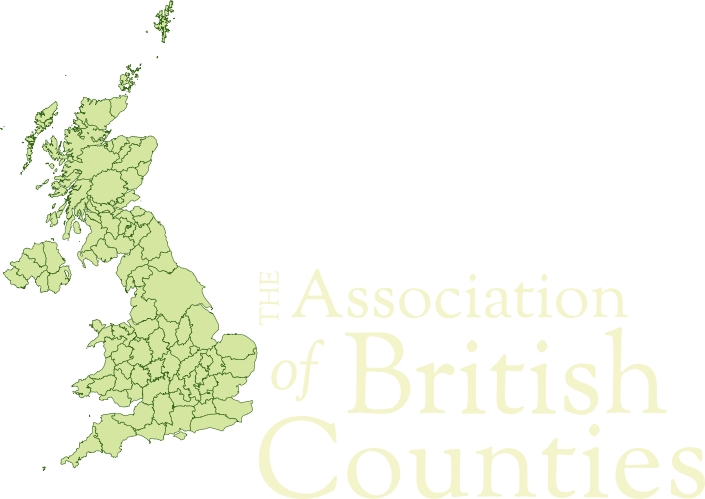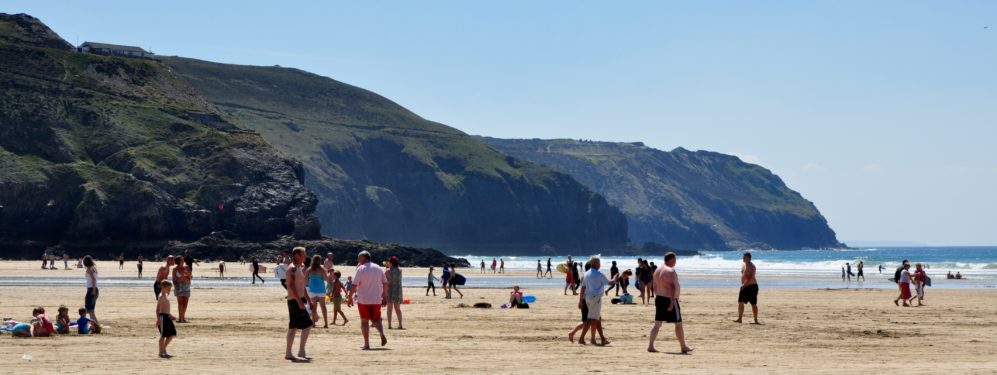For St Piran’s Day (5th March) we present our portrait of Cornwall.
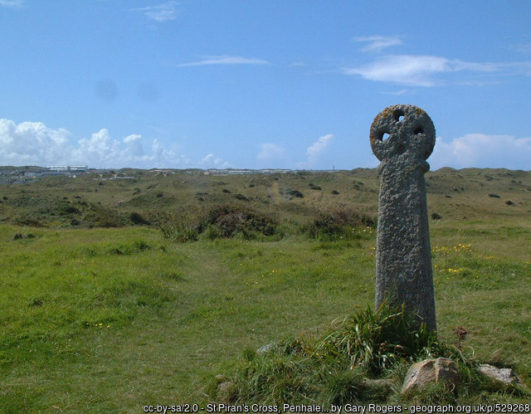
The Royal Duchy of Cornwall is a maritime county which forms the tip of the south-west peninsula of Great Britain. Cornwall is a county of astounding landscapes and distinct identity. Both coasts provide breathtaking scenery. The north coast has plunging cliffs and rocky headlands, interrupted by fine, sandy beaches in sheltered bays. The south coast has long, twisting creeks bringing the tide deep into the land, which were once ideal for smugglers. Cornwall’s rough and rugged landscape has inspired poets, novelists and artists for centuries. Prehistoric megalithic dolmens, monoliths, and circles abound on the moors and hills. The old industries (or at least the lawful ones) were tin mining , fishing, and subsistence grazing on the moors. Now tourism dominates, drawn by Cornwall’s beauty and fine weather.
Cornwall’s border with Devon is formed almost entirely by the River Tamar. Saltash is known as “the gateway to Cornwall” for here the ferries and bridges cross the broad Tamar from Plymouth. Further north, the border town of Launceston is dominated by its Norman castle.
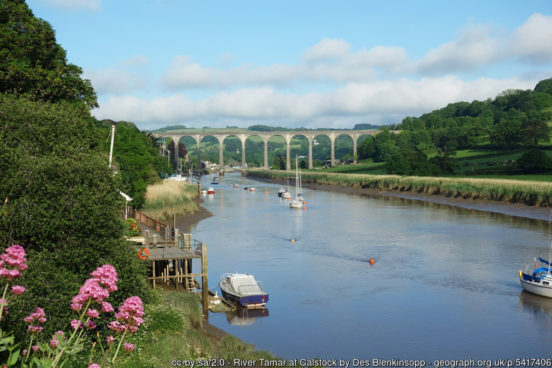
The Atlantic coast is more exposed than the English Channel coast, and has a wilder nature. Bude lies in the county’s far north, facing west into Bude Bay. The prosaically named High Cliff, between Boscastle and St Gennys, is the highest sheer-drop cliff in Cornwall at 732 ft. Tintagel Castle, on the peninsula of Tintagel Island, was built by Richard, 1st Earl of Cornwall in the 13th century. The castle has a long association with Arthurian legend. Geoffrey of Monmouth described Tintagel as the place of Arthur’s conception.
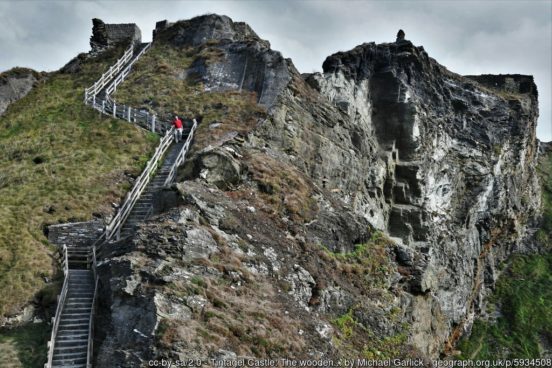
Port Isaac has a picturesque harbour and many historic buildings. Dolphins may be seen from Polzeath’s vast beach. Padstow is a fishing port on the Camel estuary. Prideaux Place is an Elizabethan country house with a fine collection of works of art. Watergate Bay is a popular location for water sports, kite flying and sand art.
Newquay has grown from a small fishing village to a major resort town and the top sufing location in Britain. Nearby is Trerice (NT), an Elizabethan manor house set in extensive, manicured grounds. Perranporth is popular with surfers and tourists because of its spectacular beach, and Atlantic swell.
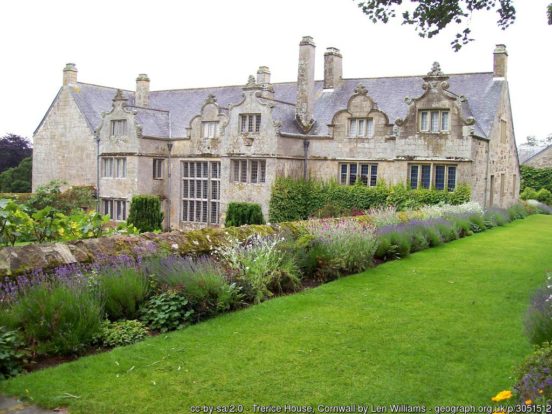
St Agnes was a centre for the mining of copper, tin and arsenic from mediæval times, the signs of which are all over the village and the cliff. Porthtowan is popular with surfers and industrial archaeologists: former mine stacks and engine houses dot the landscape. Hayle is a cargo port. The capacious Hayle estuary has been the fortune of the town ever since Roman days. Godrevy Lighthouse is said to have inspired Virginia Woolf’s novel To the Lighthouse. St Ives is a port and seaside resort which has been famous for its artistic community since the arrival of the railway in 1877. Tate St Ives exhibits work by modern British artists with links to the St Ives area.
The English Channel coast, dubbed the “Cornish Riviera”, is more sheltered with broad estuaries offering safe anchorages. Looe is a delightful fishing port and seaside town divided in twain by the tidal River Looe, which serves as its busy harbour. Fowey has thrived as a port for hundreds of years. Today Fowey is busy with trawlers and yachts. St Austell, a little inland, was once a place where tin and copper mining prevailed, but its more recent fame and wealth have come from the mining of Cornish china clay.

Falmouth is famous for its harbour which, together with Carrick Roads, forms the deepest in Western Europe. It was the start or finish point of the round-the-world record-breaking voyages of Robin Knox-Johnston and Dame Ellen MacArthur. Pendennis Castle stands above the Fal Estuary opposite its sister fort, St Mawes Castle. The castles are ‘Device Forts’, or Henrician castles, part of a defensive chain of castles built for King Henry VIII.
The interior of the county consists of a roughly east-west spine of infertile and exposed upland, with a series of granite intrusions. The uplands are surrounded by more fertile, mainly pastoral farmland. Near the south coast, deep wooded valleys provide sheltered conditions for flora that like shade and a moist, mild climate.
The most easterly of the uplands is Bodmin Moor, a wild, granite moorland. It covers some 80 square miles, across which are wind-scoured hills, weirdly shaped granite outcrops, hill farms, bourns and open moorland. The county top, Brown Willy, lies here. Dramatic granite tors rise from the rolling moorland and crown many of the hills. Prehistoric stone barrows and circles lie scattered across the moor. More than 200 Bronze Age settlements with enclosures and field patterns have been recorded. The Longstone, or Long Tom as it is known locally, is a granite structure which has had later christian carving. Dozmary Pool is identified by some with the lake in which, according to Arthurian legend, Sir Bedivere threw Excalibur to The Lady of the Lake. Bodmin, one of Cornwall’s oldest towns, lies south-west of the moor. Close by is Lanhydroch House (NT), dating back to the 1620s and set in extensive grounds. South of the moor is the ancient stannary and market town of Liskeard.
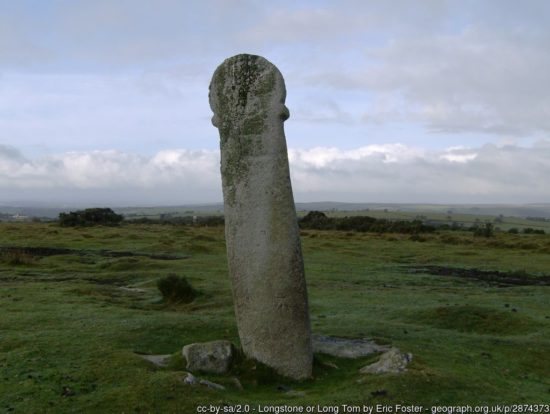
Further west, the Hensbarrow uplands lie near St Austell, the highest point being Hensbarrow Beacon. The Carnmenellis Hills lie south of Camborne, reaching to Carnmenellis Hill at 828 feet.
The most westerly granite intrusion forms the Penwith peninsula. The character of the peninsula is derived from its uncompromising geology; it is a granite massif of rugged hills, whose edges form the sea coast in cliffs and craggy coves, though the numerous bays have created sheltered fishing harbours and fine beaches. Penwith contains a great concentration of Bronze Age, Iron Age, and Romano-British archaeological remains, inlcuding Mên-an-Tol, “the hole stone”. Chysauster is a late Iron Age village of courtyard houses. The Merry Maidens is a near perfect circle of 19 regularly spaced stones. In legend, the circle was a group of girls turned to stone as punishment for dancing on the Sabbath. The Pipers, two nearby megaliths, are said to be the petrified remains of the musicians. Land’s End is the south-western tip of England.

The port town of Penzance lies in the shelter of Mount’s Bay on the south of the Penwith peninsula. To the west lies the fishing port of Newlyn and to the east is a long stretch of shore, Longsands, separating Penzance from Marazion. St Michael’s Mount, crowned by its mediæval church and castle, can be accessed by causeway at low tide.

The Lizard Peninsula extends into the sea where the English Channel gives way to the Atlantic Ocean and ends at Lizard Point. The Lizard Lighthouse was built in 1752. The first sighting of the Spanish Armada was off Lizard Point at 3 pm on 29 July 1588. Helston, at the north of the Lizard, was once a town of tin mining and a cattle market. Today it is best known for the annual Floral Dance, said to originate from the Middle Ages. Nearby is the Godolphin Estate (NT), a Tudor/Stuart mansion, complete with early formal gardens and Elizabethan stables.

At the top of the Truro River, one of many leading to the River Fal, is the city of Truro, known for its charming cobbled streets, Georgian architecture and for Truro Cathedral. The former mining town of Redruth lies west of Truro. Carn Brea rises above the town, the site of a Neolithic and Iron Age settlement and of an 18th-century folly built on a 14th-century chapel.

The Isles of Scilly form an archipelago of five inhabited islands and numerous other small rocky islets lying 28 miles off Land’s End. St Mary’s is the largest and most populous of the islands and their main port.
The Prince of Wales is Duke of Cornwall, the Duchy owning much of the county. Historically Cornwall was a separate kingdom, being absorbed into English Wessex only in the 9th or 10th century. In latter years Cornishmen have been reasserting their distinctive identity and even the Cornish language, which died out in the 18th century but flavours most of its place-names.
Saint Piran (died c. 480) was a 5th-century Cornish abbot and saint. He is the patron saint of tin-miners, and is generally regarded as the patron saint of Cornwall. Amid the windblown dunes of Penhale Sands, near Perranporth, lie the remains of St Piran’s Oratory, one of the oldest and most important sacred sites in Britain, second only in age to Iona Abbey in Scotland. The Oratory was established by Piran, who landed on the beach here after exile from his homeland in Ireland. Closeby is St Piran’s Cross, one of the oldest stone crosses in Cornwall. Saint Piran’s Flag, a white cross on a black background, traditionally the emblem of the Cornish tinners, is the Cornish flag. Saint Piran’s Day falls on 5 March and is widely celebrated as the Cornish national day.

